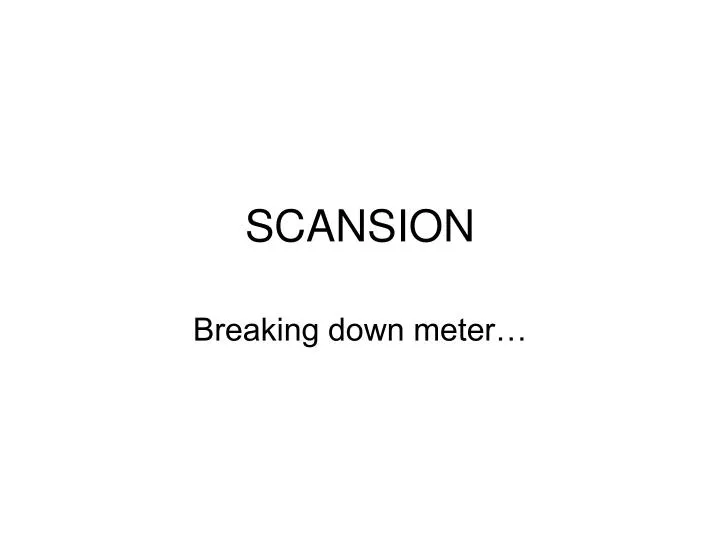

#Scansion marks license#
The benefits of paying for Fabrizio is that you get the license to use it leagally. It is always best to pay for a premium font rather than trying to find an illegal download. Just think how much time and effort you will save if you just pay for Fabrizio and be done with it.
#Scansion marks download#
Feel free to waste valuable hours of your time searching for a free download of Fabrizio, but take it from me, you will not be successful in your quest. We showcase fonts on SharedFonts that are almost all premium fonts. This is a premium font which mean that you will have to pay to download and use it in your project. Fabrizio is definitely not available as a free download font. You're probably thinking - Is Fabrizio available to Download for free? For more previews using your own text as an example, click here. Here is a preview of how Fabrizio will look. The Fabrizio includes the following font families: Two ‘Special’ fonts (roman and italic) containing special accents, letters for transliteration, Vietnamese letters, mathematics signs and symbols, arrows, commercial signs, pictograms, figures in circles, scansion marks, braces & benzene rings and the Rafaeli-Meruba Hebrew letters, as well as Latin, Cyrillic and Greek letters, are included in the Fabrizio family. A set of swash letters and sets of superiors, inferiors, fractions and phonetic letters are also offered. Alternative forms are supplied in ‘B’ versions of each style. Each style (roman, small capitals, italic, semi-bold, bold) contains Cyrillic and ‘polytonic’ Greek letters and letters for many European languages (Czech, Hungarian, Icelandic, Lettish, Polish, Romanian, Serbian, Ukrainian, Welsh etc.), non-kerning fs, long ſ, ligatures and fractions. The types are now offered for general sale. This is caused when there is a break in words in the middle of a foot.The new Fabrizio™ types, designed by Ari Rafaeli, have made their first appearance in Saggi di Letteratura Italiana: Da Dante per Pirandello a Orazio Costa, by Lucilla Bonavita, printed at Pisa in March 2016 by Fabrizio Serra Editore for whom the type was specially designed. In some poetic meters, such as dactylic hexameter, there is also a main caesura in every line written as (˄). The pattern of feet then determines the meter. A line of Latin verse is divided into feet depending on the pattern of long and short syllables. These rules are demonstrated in the following words taken from the extract above:Īs mentioned, Latin poetry depends on the length of syllables rather than their stress accent. Unlike English there are fairly consistent rules to work out where the stress accent is placed in Latin words.ġ)ğor words of two syllables, the accent usually goes on the second last syllable.Ģ)ğor words of more than two syllables where the second last syllable is long, the accent goes on the second last syllable.ģ)ğor words of more than two syllables where the second last syllable is short, the accent goes on the third last syllable.

The stress accent is determined by the length of the syllables but not the same as it. This is where the natural emphasis goes when speaking. The long syllable at the end of novum is caused by the two consonants (m and l) following it whereas the long syllable at the end of dono has to be long by nature as there is only one consonant following it.Īs well as long and short syllables Latin also has a stress accent, like English.

The following line is from Poem 1 by Catullus in hendecasyllables. If a vowel is followed by two consonants, then the syllable will be long irrespective of the nature of the vowel.

On the other hand, if a syllable is long by position, the consonants around the vowel sound determine the syllables length, rather than the syllable itself. If a syllable is long by nature that means that the vowel sound is long and pronounced differently to its short counterpart (e.g.). A syllable’s length is determined by both its nature and its position. All syllables are either one or the other. The two different lengths for syllables are long (indicated by a macron ˉ ) and short (indicated by a breve ˇ ). The metre of Latin poetry, unlike English poetry, is dependent on the length of the syllables rather than their accent. All latin syllables are either long or short and stressed or unstressed.


 0 kommentar(er)
0 kommentar(er)
